Best
Beginner
Euphonium
-
Overall: 9/10
-
Best Feature: Lighter weight model
-
TedScore™: 9/10
Best
Intermediate Euphonium
-
Overall: 8/10
-
Best Feature: Built using state-of-the-art technology
-
TedScore™: 8/10
Best
Budget-Friendly Euphonium
-
Overall: 7/10
-
Best Feature: stainless steel pistons
-
TedScore™: 7/10
The euphonium range is distinctive, from deep, rich lows to bright, singing highs. This fascinating range allows it to bridge the gap between the tenor and baritone horns, offering unique versatility.
What’s fun about the euphonium is its ability to hit the “pedal range” easily, something other brass instruments struggle with. The make and model of the euphonium can influence the extent of its range, adding an element of excitement for musicians as they explore the instrument’s full potential.
Picture playing an instrument that can hold down the low notes and go high. Keep reading to learn more about how this works and explore the different sounds of the euphonium!
Understanding the Euphonium
History of the Euphonium
The euphonium is a brass instrument that has existed since the mid-19th century. Ferdinand Sommer invented it in Germany, first known as the “tenor tuba.”
The euphonium was designed to fill the gap between the baritone horn and the tuba, and it quickly became popular in British brass bands.
The euphonium was developed from the “ophicleide”, an ancient Greek instrument used in military bands. The ophicleide had a similar shape to the euphonium, but it was made of wood instead of brass.
The euphonium has undergone many changes over the years. In the early days, it had piston valves, but later on, rotary valves were introduced.
It has also been used in orchestral brass and has become a popular solo instrument.

Euphonium Vs Other Brass Instruments
Although euphoniums are often mistaken for being called trombones, they are actually a distinct brass instrument with a unique sound and range.
The euphonium is often compared to other brass instruments such as the baritone horn, tuba, cornet, horn, trumpet, and trombone. While they share some similarities, the euphonium has a unique sound and range that sets it apart.
Compared to the baritone horn, the euphonium has a darker, richer sound and a wider range. The tuba, on the other hand, has a lower range and a more mellow sound.
The cornet and trumpet have a brighter sound, while the horn has a mellower, more rounded sound. The trombone has a more brassy sound and a slide instead of valves.

The euphonium is also part of the saxhorn family, including the baritone, tenor, and other instruments. The saxhorns were invented by Adolphe Sax, who also invented the saxophone.
It’s a versatile and unique instrument with a special place in British brass bands and orchestral brass music.
The Euphonium's Range
As a euphonium player, you have a unique and versatile instrument at your fingertips. The euphonium’s range spans bass and treble clefs, making it a valuable addition to any ensemble.
This section will explore the euphonium’s range, including its bass and treble clef notation, transposition, and concert pitch.
Bass and Treble Clef
Transposition
Concert Pitch
The Euphonium's Sound Quality
Regarding sound quality, the euphonium is a unique and versatile instrument that can produce a range of sounds.
The euphonium’s sound is often described as rich, warm, and mellow, with a full-bodied tone that can be both powerful and delicate.
Cylindrical Vs Conical Bore
One of the key factors that affect the sound of a euphonium is the shape of its bore. Euphoniums can have either a cylindrical or conical bore.
Cylindrical bore euphoniums have a more focused sound, with a brighter tone and better projection. Conical bore euphoniums have a more mellow sound, with a fuller tone and a more complex timbre.
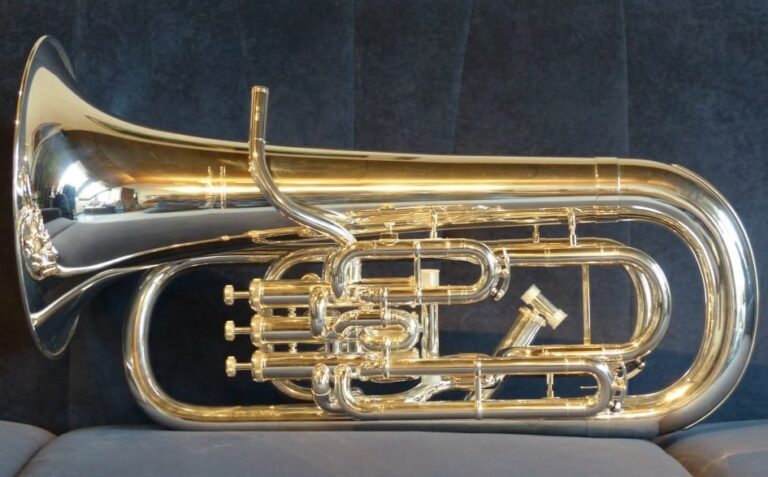
The bore size of a euphonium, which is the diameter of the tubing inside the instrument, also plays a significant role in determining its sound and tone quality.
Three Valves Vs Four Valves
Another factor affecting the sound of a euphonium is its number of valves. Most euphoniums have three valves, but some models have four valves.
The fourth valve adds an extra half-step to the instrument’s range, making it easier to play specific notes.
However, it can also affect the sound quality, making it slightly darker and more mellow.
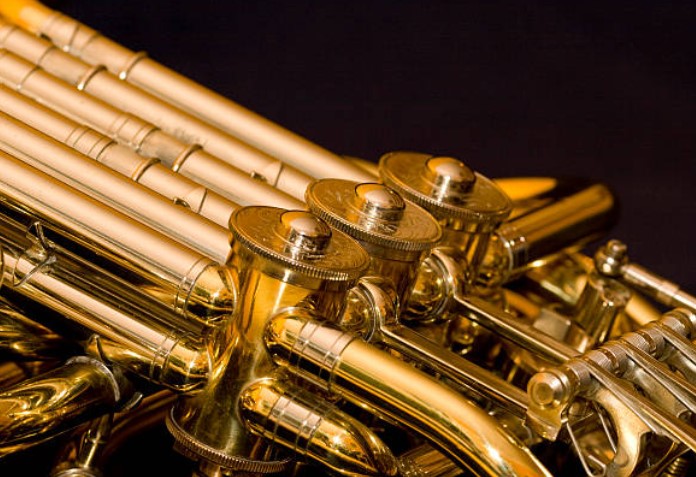
Playing the Euphonium
If you’re playing the euphonium, it’s important to understand the basics of fingering and technique. By mastering these skills, you can play a wide range of music and express yourself through your instrument.
Fingering and Technique
Proper fingering is essential for producing clear and accurate notes when playing the euphonium. Using the correct fingerings for each note and practising scales and arpeggios to develop finger strength and dexterity is essential.
In addition to fingering, breath control and posture are important aspects of the euphonium technique.
It’s important to maintain proper posture and control your breath to produce a steady stream of air to produce a clear and consistent sound.

Learning Resources
If you’re new to the euphonium, many resources are available to help you learn and improve your skills. Online tutorials, instructional videos, and sheet music are great for beginners.
In addition to online resources, working with a qualified instructor who can provide personalized feedback and guidance is essential. A professional euphonium player can help you develop proper technique and provide tips and tricks to help you improve your playing.
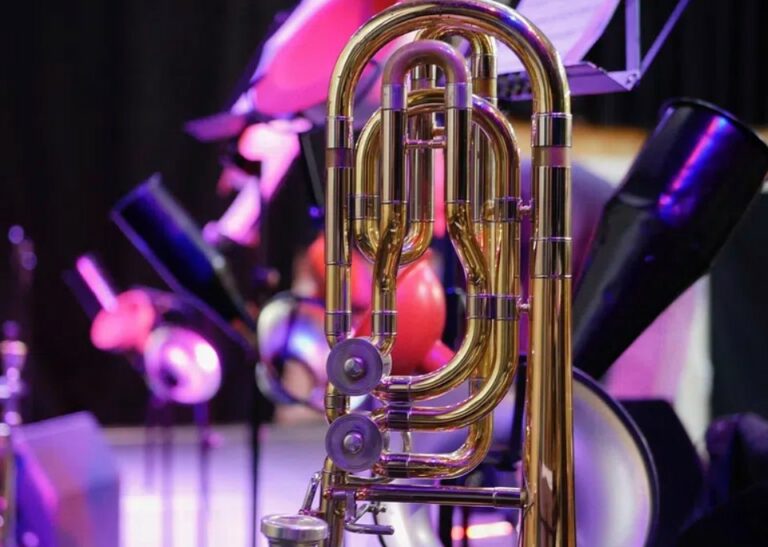
The Euphonium in Different Settings
Euphonium in Orchestra
The euphonium is a versatile instrument used in various settings, including orchestras. In an orchestra, the euphonium is typically part of the brass section and provides a rich, warm sound that complements the other instruments.
The euphonium is often used to play melodies and solos in orchestral pieces, and its expressive range makes it a valuable addition to any orchestra. In addition, the euphonium can also play harmony and accompaniment parts, making it a jack of all trades in the orchestra.

Euphonium in Bands
The euphonium is also commonly used in bands, particularly wind bands. In a wind band, the euphonium is typically part of the brass section and provides a rich, full sound that complements the other brass instruments.
In wind bands, the euphonium is often used to play melodies and solos, but it can also play harmony and accompaniment parts. Its versatility makes it a valuable addition to any wind band.
5 Recommended Euphoniums

FEATURES: - Crisp, warm tone and balanced resistance throughout the range
- Carefully designed valve system
for perfect intonation
- Lighter weight model
- Tonal colours perfect for ensemble
and solo performances
Yamaha YEP201 Student Euphonium, Gold
When you check the price above, you’ll see there are loads of great places to buy this item. Our personal favorite is Gear4music.
It is the largest music retailer in the UK and fast becoming the most respected online music shop in the US too. Their customer service is excellent, they have competitive prices, really fast shipping, and usually have the longest guarantee.
Most professional musicians use Gear4music, so there is no reason why you shouldn’t too!
- Includes a Yamaha mouthpiece and sturdy case
- Provides a free five-year extended warranty upon purchase
- The instrument's gold finish may be prone to scratches and wear
The professional musician who wrote this article combined many things,
from the product build, manufacturer’s reputation through to feedback
from other users, to create our famous TedScore™.

FEATURES: - Features a professional style tuning trigger
- Glorious silver plate with a gold trim finish
-Lighter weight model
- Rose brass lead pipe produces a rich
and sonorous sound
Conn-Selmer 300EH Euphonium, Silver Plate with Trigger
When you check the price above, you’ll see there are loads of great places to buy this item. Our personal favorite is Gear4music.
It is the largest music retailer in the UK and fast becoming the most respected online music shop in the US too. Their customer service is excellent, they have competitive prices, really fast shipping, and usually have the longest guarantee.
Most professional musicians use Gear4music, so there is no reason why you shouldn’t too!
- Includes a mouthpiece and lightweight cast with wheels
- The four-valve, fully compensating system is perfect for fast progression
- More expensive than some other intermediate-level euphoniums on the market
The professional musician who wrote this article combined many things,
from the product build, manufacturer’s reputation through to feedback
from other users, to create our famous TedScore™.

FEATURES: - The tone blends perfectly with a brass band
- Built using state-of-the-art technology
-Rose brass lead pipe produces a
warm and resonant tone
Jupiter JEP1120 Performers Euphonium, Clear Lacquer
When you check the price above, you’ll see there are loads of great places to buy this item. Our personal favorite is Gear4music.
It is the largest music retailer in the UK and fast becoming the most respected online music shop in the US too. Their customer service is excellent, they have competitive prices, really fast shipping, and usually have the longest guarantee.
Most professional musicians use Gear4music, so there is no reason why you shouldn’t too!
- Includes a hardshell case and mouthpiece
- Purposefully designed to suit top-level players
- Relatively heavy instrument
- Quite pricey for an intermediate-level instrument
The professional musician who wrote this article combined many things,
from the product build, manufacturer’s reputation through to feedback
from other users, to create our famous TedScore™.
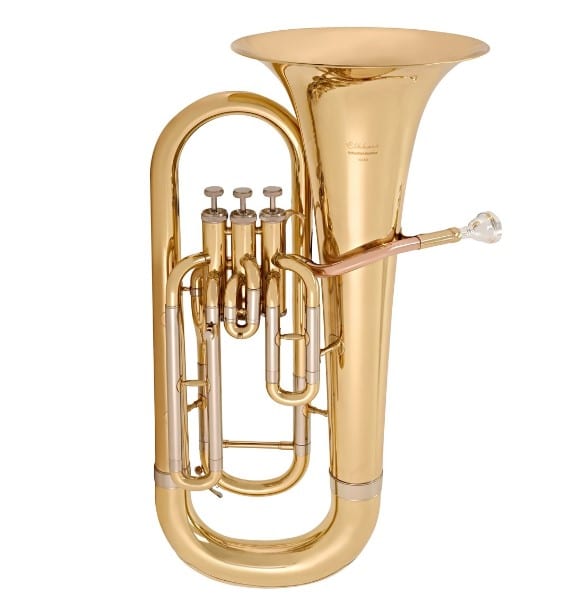
FEATURES: - Play smoothly with stainless steel pistons
- A maintenance-friendly design
thanks to removable valve sections
-Fit in anywhere with a
professional-looking lacquered brass body
- You're ready to go with the
included wood-frame case
Elkhart 100EH Student 3 Valve Euphonium
When you check the price above, you’ll see there are loads of great places to buy this item. Our personal favorite is Gear4music.
It is the largest music retailer in the UK and fast becoming the most respected online music shop in the US too. Their customer service is excellent, they have competitive prices, really fast shipping, and usually have the longest guarantee.
Most professional musicians use Gear4music, so there is no reason why you shouldn’t too!
- Comes with a backpack-style case and mouthpiece included
- Ideal for use in schools and brass bands alike
- Some users reported that the sound quality is not as rich or full as higher-quality models
The professional musician who wrote this article combined many things,
from the product build, manufacturer’s reputation through to feedback
from other users, to create our famous TedScore™.
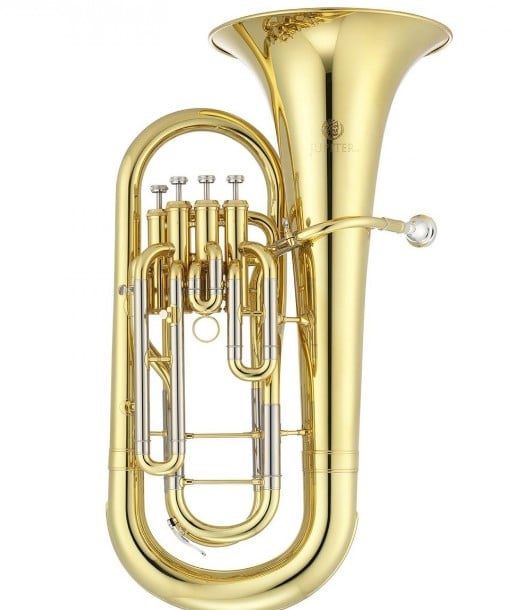
FEATURES: -Stainless steel pistons
ensure smooth playing
- Removable valve sections make maintenance a breeze
-Professional-looking lacquered
brass body fits in anywhere
- Wood-frame case included for easy transportation
Jupiter JEP1000 Euphonium, Clear Lacquer
When you check the price above, you’ll see there are loads of great places to buy this item. Our personal favorite is Gear4music.
It is the largest music retailer in the UK and fast becoming the most respected online music shop in the US too. Their customer service is excellent, they have competitive prices, really fast shipping, and usually have the longest guarantee.
Most professional musicians use Gear4music, so there is no reason why you shouldn’t too!
- Comes with a backpack-style case and mouthpiece included
- Ideal for use in schools and brass bands alike
- Some users reported that the sound quality is not as rich or full as higher-quality models
The professional musician who wrote this article combined many things,
from the product build, manufacturer’s reputation through to feedback
from other users, to create our famous TedScore™.
Euphonium Range
Summary
Wow! You’ve just unlocked the secrets of the Euphonium Range and discovered a whole new world of musical possibilities.
Whether you’re a beginner or a seasoned pro, understanding the range of your instrument is key to unlocking its full potential.
So, keep practicing those high notes and low tones, and don’t be afraid to experiment with different styles and genres. With the proper knowledge and practice, you’ll be a Euphonium master in no time!
Wait, there’s more!!!
If you’re a dedicated brass instrument player, level up your musical experience with the right tools! Take a look at the best accessories for you in this next article!
Best Accessories For Brass Players
FAQ's
It’s difficult to say whether the euphonium is more accessible than the baritone, as both instruments have unique challenges. However, some players may find the euphonium more comfortable due to its smaller size and lighter weight.
To increase your euphonium range, it’s important to practice regularly and gradually work your way up to higher notes. Start with exercises focusing on the instrument’s middle range and gradually work your way up to the higher notes.
The euphonium has a range spanning from deep, low notes to high, bright ones, allowing it to bridge the gap between tenor and baritone horns. It’s known for its ability to hit the “pedal range” with ease, something that other brass instruments struggle with.












Hmm, I see your points about the euphonium’s range being notably versatile, especially with the detail on transposition and concert pitch, but are we really saying it holds its own against, say, a trombone or a tuba in orchestral settings? I mean, those instruments have their unique appeal too. Would love to hear more about how the euphonium fills that niche differently from your perspective, Robert Emery.
Interesting read on the history and how it compares to other brass instruments. I’ve always thought the euphonium was kind of underrated. Good to see it getting some spotlight.
Loved the section on learning resources. Such a great help for my students. Kudos for putting this together!
Hey, Robert Emery, I was reading through the part about the euphonium’s sound quality and got curious about how the number of valves affects the sound. I understand the basic difference between three and four valves, but could you dive deeper into how that fourth valve enhances the instrument’s range or timbre? Always looking to get those specifics down for my studies. Thanks a bunch!
Hey MelodyTunes, not Robert, but hope I can help! The fourth valve basically extends the range of the instrument by allowing you to play lower notes that are not accessible or tuneable with just three valves. It’s also a big help for alternate fingerings which can make playing certain pieces smoother. Hope that clears it up!